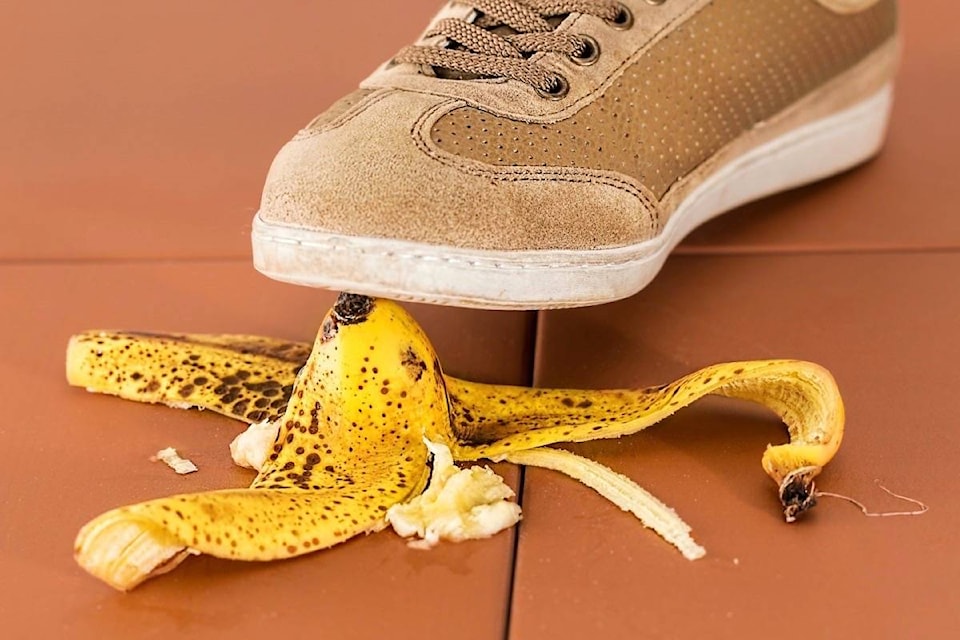By Kelly Wilson
More people fall during our cold Canadian winter than during any other season. No one is immune to falls, yet the consequences of falls differ markedly across age groups. At 25, you may only injure your dignity; at 45, you may break your wrist; and above 65, you may suffer a serious fracture or head injury. Nevertheless, it takes but a second, and a fall for anyone could mean long-term rehabilitation, permanent disability, or death.
The people who are most at risk are generally older adults who are frail, who are weak, who are inactive, who spend a lot of time seated in their homes, and who don’t get out a lot.
Falls are a serious threat to older adults’ health and independence. They are very common: one in three adults over the age of 65 fall at least once a year, and those numbers go up to one in two for adults over the age of 80. It’s a really serious problem because people get hurt and come into emergency departments; then they have to have treatment and possibly admission to hospital, and sometimes they can’t go home.
When the weather gets treacherous, take these steps to keep safe no matter what your age:
1. Shovel your driveway, walks, and stairs. This is an obvious one, but not to be neglected. It’s also the neighbourly thing to do. Keep an eye out, too, for neighbours who are elderly or who have a disability, and lend a hand if needed. With changes in temperature, a freeze-thaw cycle can make for extremely icy conditions. Spread salt or sand to reduce the risk of a fall.
2. Wear good footwear. Not all footwear is made equal. Even winter boots differ in the amount of slip resistance they offer. To find ratings on specific footwear, visit the Toronto Rehabilitation Institute’s website Rate My Treads (www.ratemytreads.com). Ratings go from zero to three snowflakes, with three snowflakes offering the most grip. However, be cautious with cleats and spikes designed for outdoor icy conditions, as they can increase your risk of falls on other indoor surfaces
3. Stay active. This is counterintuitive advice, since getting up and getting moving would seem to put you at risk of a fall. Yet a more sedentary lifestyle—more likely in the winter months—leads to muscle loss, which decreases strength and balance. If walking outdoors is not an option, walk indoors at your local gym, for example, or even in the hallways of your house or apartment building. Swimming is another excellent way to stay limber. Mobility is medicine—take it every day!
4. Helmets, helmets, helmets. ’Tis the season for skating, skiing, snowboarding, and snowmobiling. For these and other activities, wear a helmet. Helmets look fashionable, keep you warm, and most importantly protect your brain. Adults, set an example for your kids: don a helmet by default.
5. Be present in your body. Proprioception is our sense of our body’s position in space, including our sense of balance. This sense suffers from the many distractions in our day, not least of which are our smart phones. Avoid rushing and “multi-tasking”. Be mindful of where you put your feet and tune in to your surroundings when you are walking.
6. Eat and drink for good health. Eat healthy foods and drink plenty of water—poor nutrition and dehydration can cause dizziness.
7. Mind your medications. Taking more than five medications increases your risk for falling, and some medications can make you feel dizzy or drowsy. If you think your medications are making you unsteady, be sure to tell your doctor, nurse practitioner, or pharmacist right away. Don’t stop taking your medication without speaking with them first.
Lastly, quality of life is key. Partaking in the activities we enjoy often entails a level of risk. We cannot completely eliminate risk, but through these steps we can greatly decrease our chances of a fall. May you enjoy the winter season and stay safe!
For more information about fall and injury prevention, visit the fall prevention site www.findingbalancebc.ca and the Your Health section at www.interiorhealth.ca.
Kelly Wilson is the Interior Health Quality Consultant, Falls and Injury Prevention.
editorial@accjournal.ca
Like us on Facebook and follow us on Twitter
